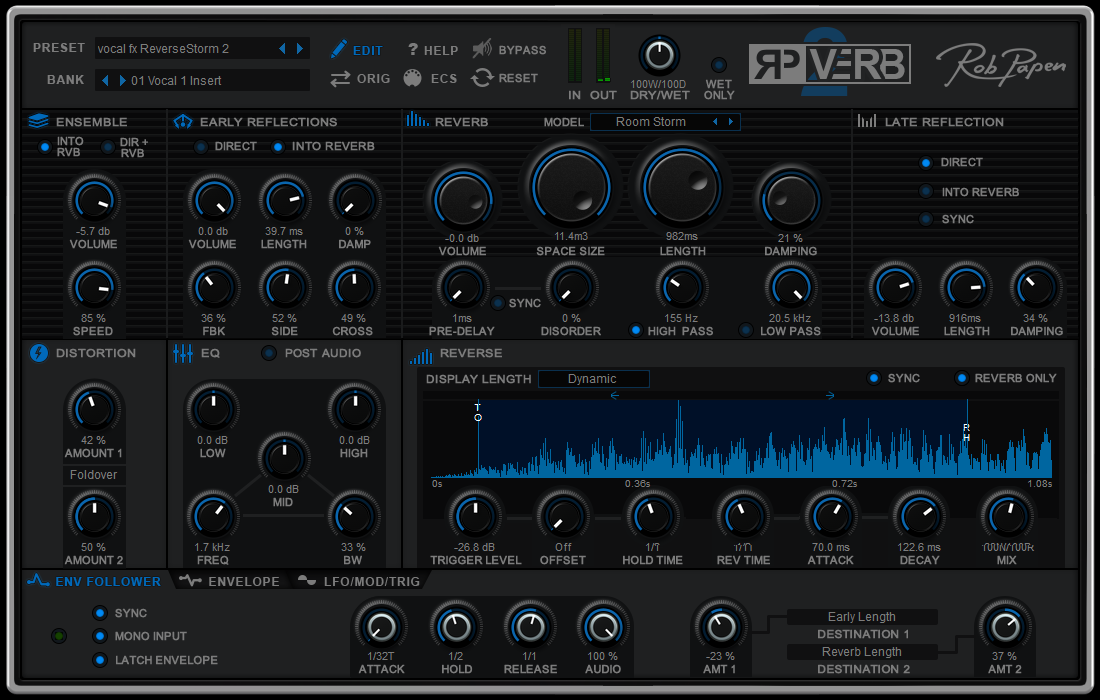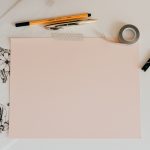Reverb tips and tricks
In this post, I’ll cover a variety of reverb tips and tricks. If you’ve been following this blog or know me, you’ll know that reverb is one of my favorite effects and that I use it a lot. Quite a lot. As an early lover of dub techno – where reverb plays an important role – I’ve always also used it to create spaces in the mix.
The main uses for reverb are to:
- Add an aesthetic and color. Some genres heavily depend on reverb to bring a certain mood to a mix. In dub, reggae, and techno, reverb often creates a dreamy feel that can be paired with delays to create a psychedelic effect.
- Clarify a mix. If you use reverb in a specific way, it can make a huge difference in the precision of your mix, mostly for percussion, which will find their way in a created room. Sometimes percussion are hidden on top of one another.
- Add depth. As a listener, there’s something quite lovely when you feel you’ve been transported into a room, a space where the sounds float around. This can be used to create the feeling of a live space.
- Contribute to gluing a mix together. If most of your sounds are directed to a unique reverb in a send/AUX, they will feel united as part of the same aesthetic.
But also, if used wrongly, reverb can causes issues including:
- Muddiness in a mix. Too much decay added to sounds will create a very dense space and sounds might get lost.
- Muffled sounds. Percussive sounds that are swallowed in reverb will feel too distant and blurry.
- Removes punch. If you lose the transients in the reverb, your song will feel dull and like it has no impact.
- Added artifacts. Bad quality reverb create a certain noise that, once compressed or sent to mastering, will be translated in “pixelated“, artificial sounding results.
There are different ways to use reverb effectively so you get the most of it. Let’s discuss the different parameters of reverb, what they mean, and how to set them.
Reverb type
I will not get in details on how reverb works, how they were created, or those technical points but will focus on how I use them personally. The first thing to point out is the type of reverb to use. Each type of reverb uses a model of a specific kind of environment.
- Room: Excellent on short samples or ones with fast transients. It clarifies the relation between multiple by creating space.
- Chamber: Similar to rooms but deeper, thicker. Excellent for percussion as well but can give body to synths.
- Hall: For long, ethereal presence. Halls are beautiful and will extend the decay of sounds, allowing multiple sounds to merge and melt together, with elegance.
- Plates: Lots of colors, a touch of mysticism. Same use as Halls but with more personality.
- Convolution: Used for emulation of space, therefore extremely useful for sound design. They can emulate anything above with sometimes, a bit more of an organic feel.
Now some parameters most reverb units come with include:
- Wet/Dry: For the amount of reverb mixed with the incoming signal.
- Pre-delay: “Pre-delay is the time between the end of the initial sound and the beginning of the first reflections being audible.” Set-properly, this will be responsible for the clarity of the reverb on your sounds.
- Decay: How long lasts the reverb.
- EQ: Most reverbs now have EQs included. This to set the tone of the reverb, as in bright or dark.
Now, on how to use all of those paramaters, here are my personal notes:
- Using multiple types of reverb in a project can be risky but can also be beautiful if done right. I find that rooms, plates and halls at very low level will add a lot of depth to a mix. Generally, 5-15% on the wet-dry.
- The Abbey Road trick involves cutting out of the reverb most of anything under 250-300hz and then lowering most of the high-mids.
- Using bright reverb on dull sounds will bring out a natural brightness. This is a good alternative to boosting highs with an EQ.
- Darker reverb tones add depth and body to sounds.
- Percussion sounds great in dark plates too, not just rooms.
- Play with the pre-delay to add depth. You can always sync it to the host BPM too. Otherwise, try avoiding going above 30ms to avoid too much action.
- Find convolution online or make your own. If you like the reverb of a song, you can import it in the convolution to pick it up. Use a moment where the reverb can be heard on a percussion and the tail is very obvious. I often use old jazz songs for dirty verbs.
- Automate some parameters in your reverb to add mysterious movement.
- Try to use reverb in a send, and then send away different sounds in various AUX. I like to use up to 3 plugins and decide what sound goes where.
Reverb unit suggestions:
RP-Verb 2 for its organic feel.
Mturboreverb for the internal self-modulation you can do plus the crazy possibilities it can bring you.
Tverb for the percussion.
Adaptiverb for the ultimate sound design options. Use this with a plugin and never miss material for new pads.
SEE ALSO : Avoid setting music goals and work on your system instead




Leave a Reply
Want to join the discussion?Feel free to contribute!